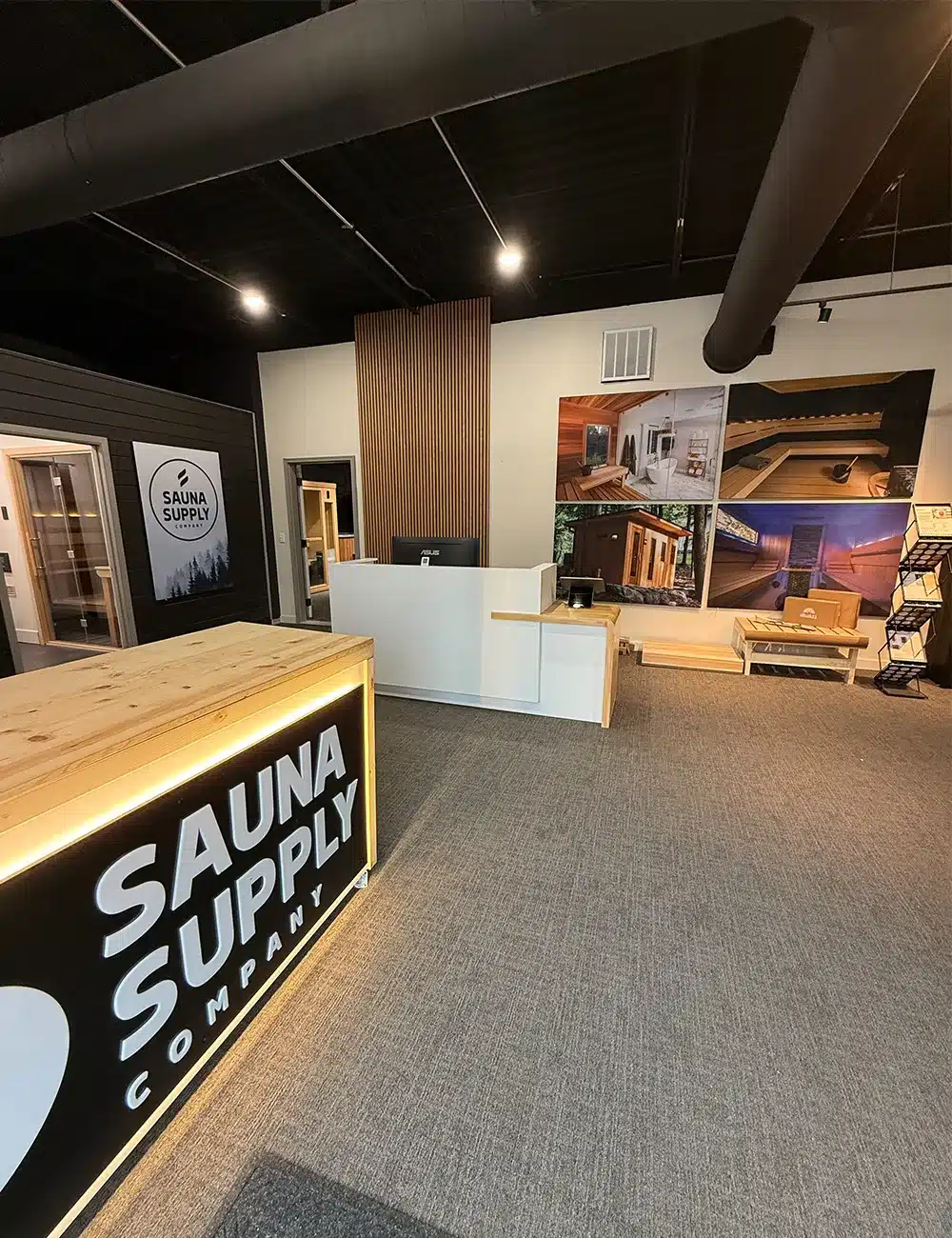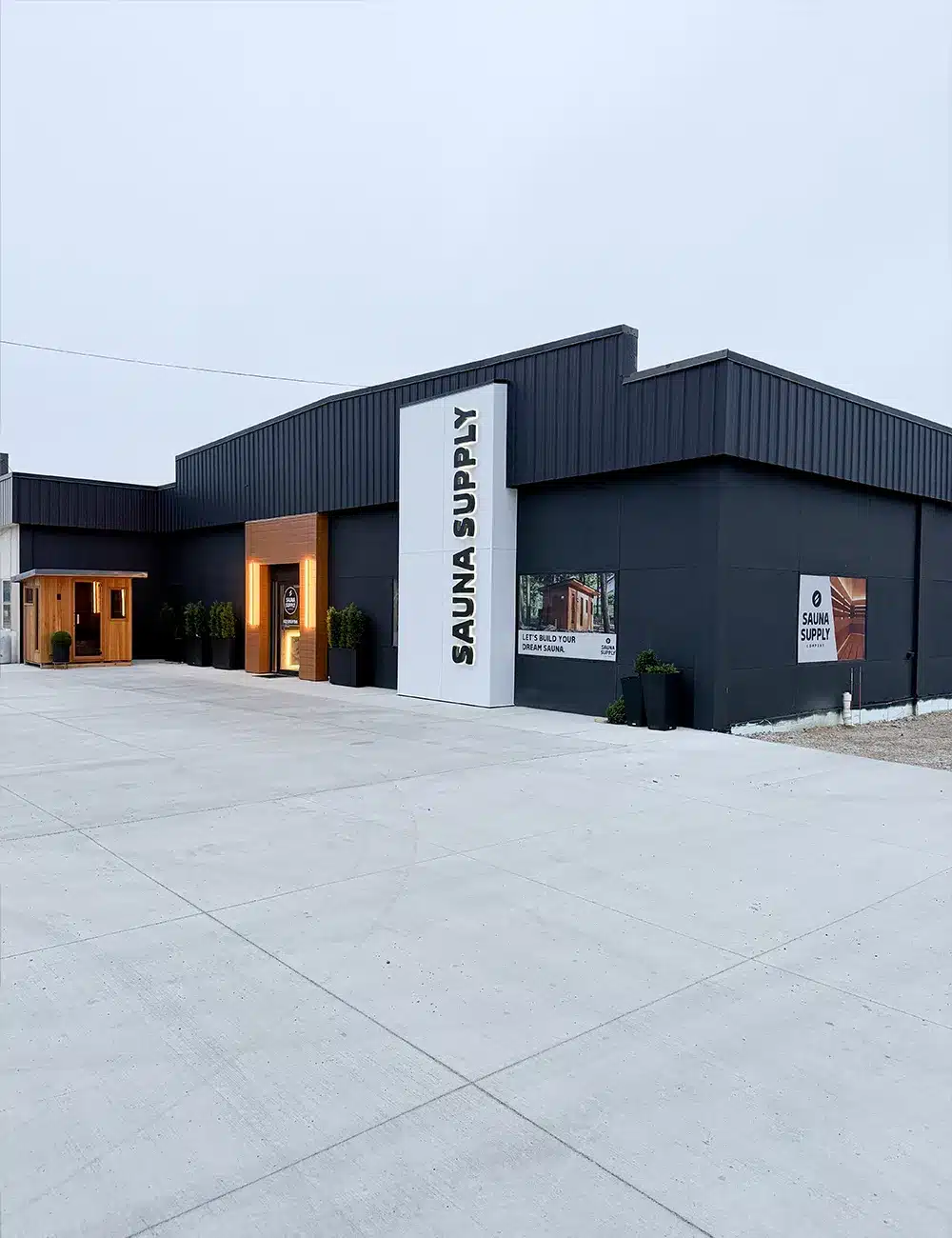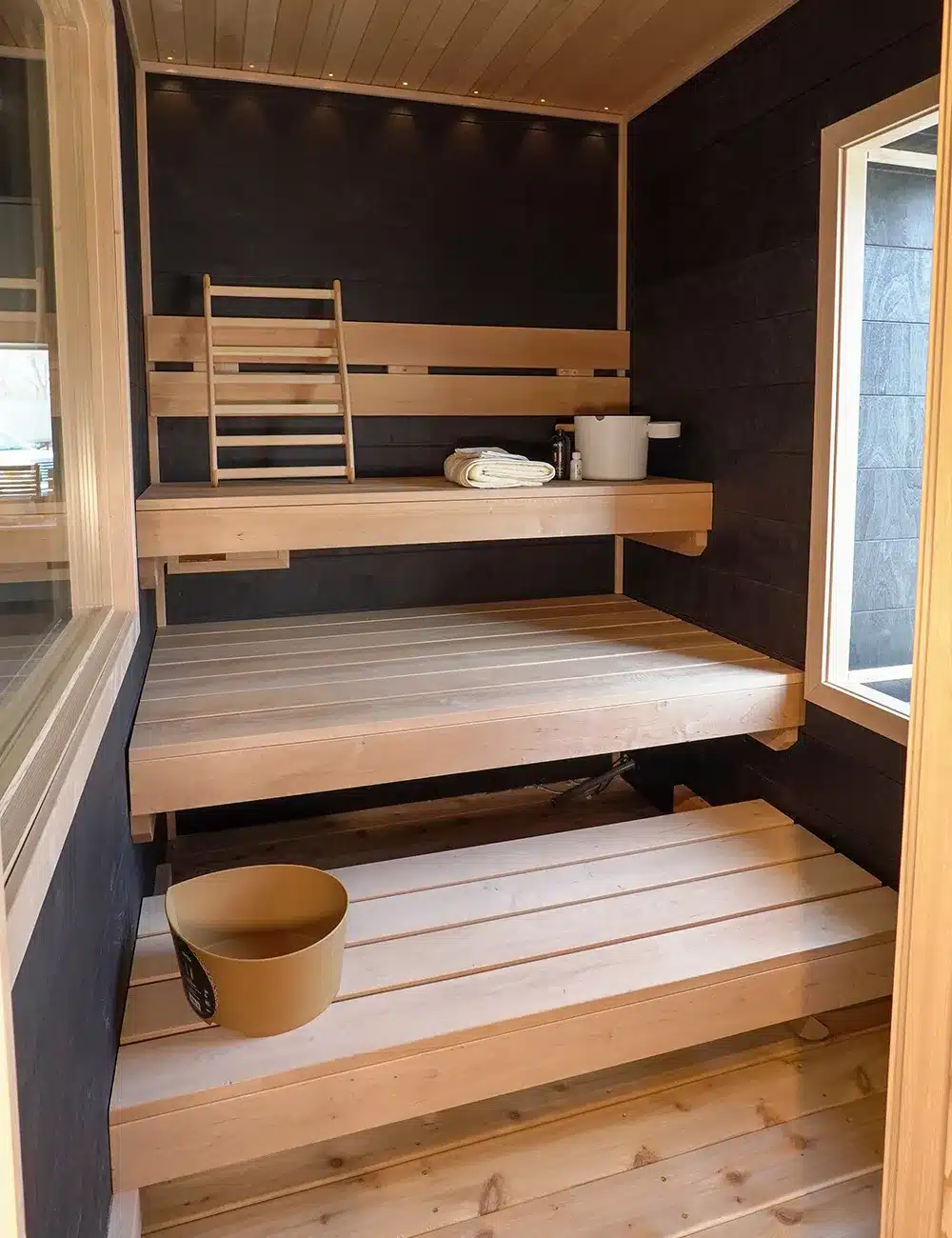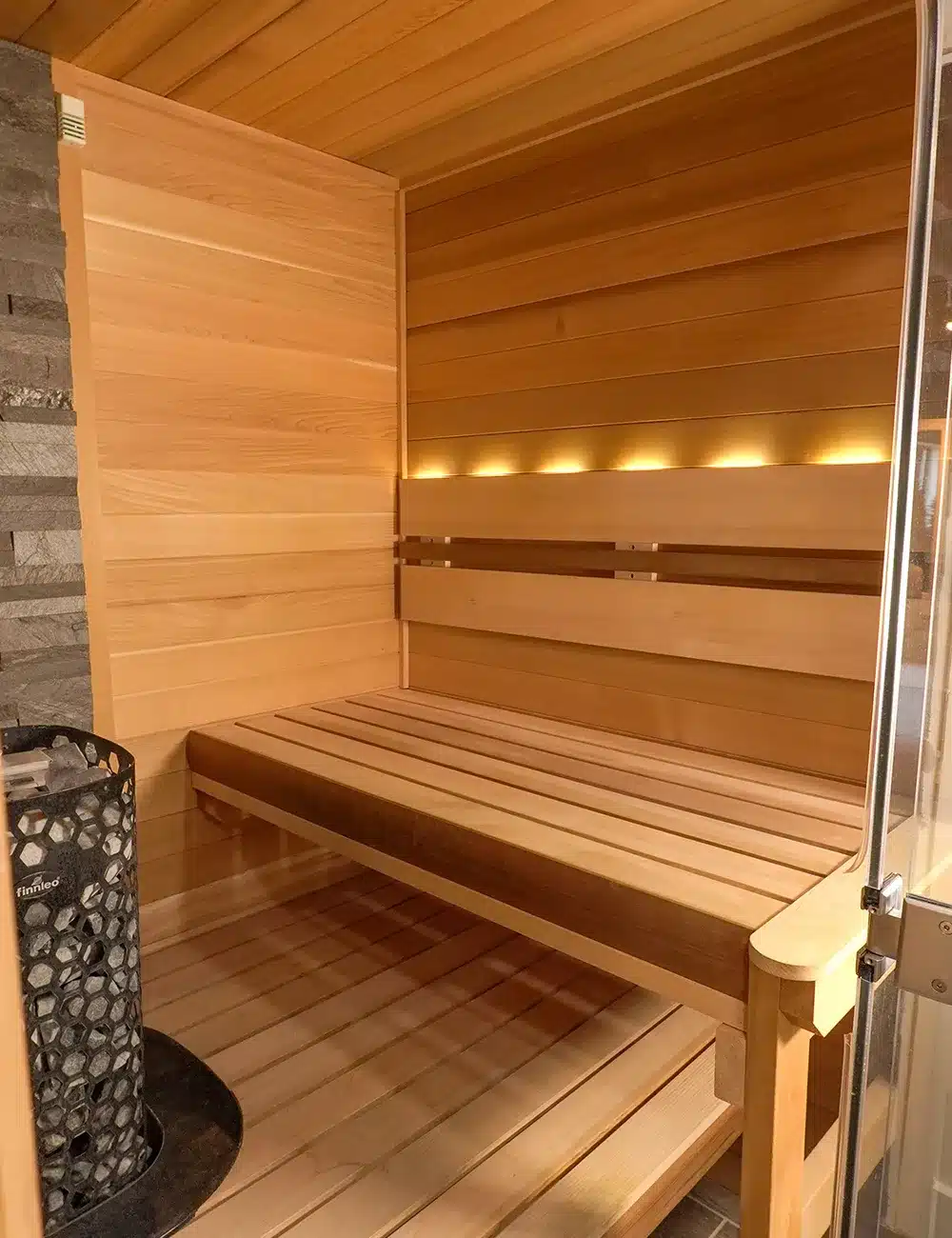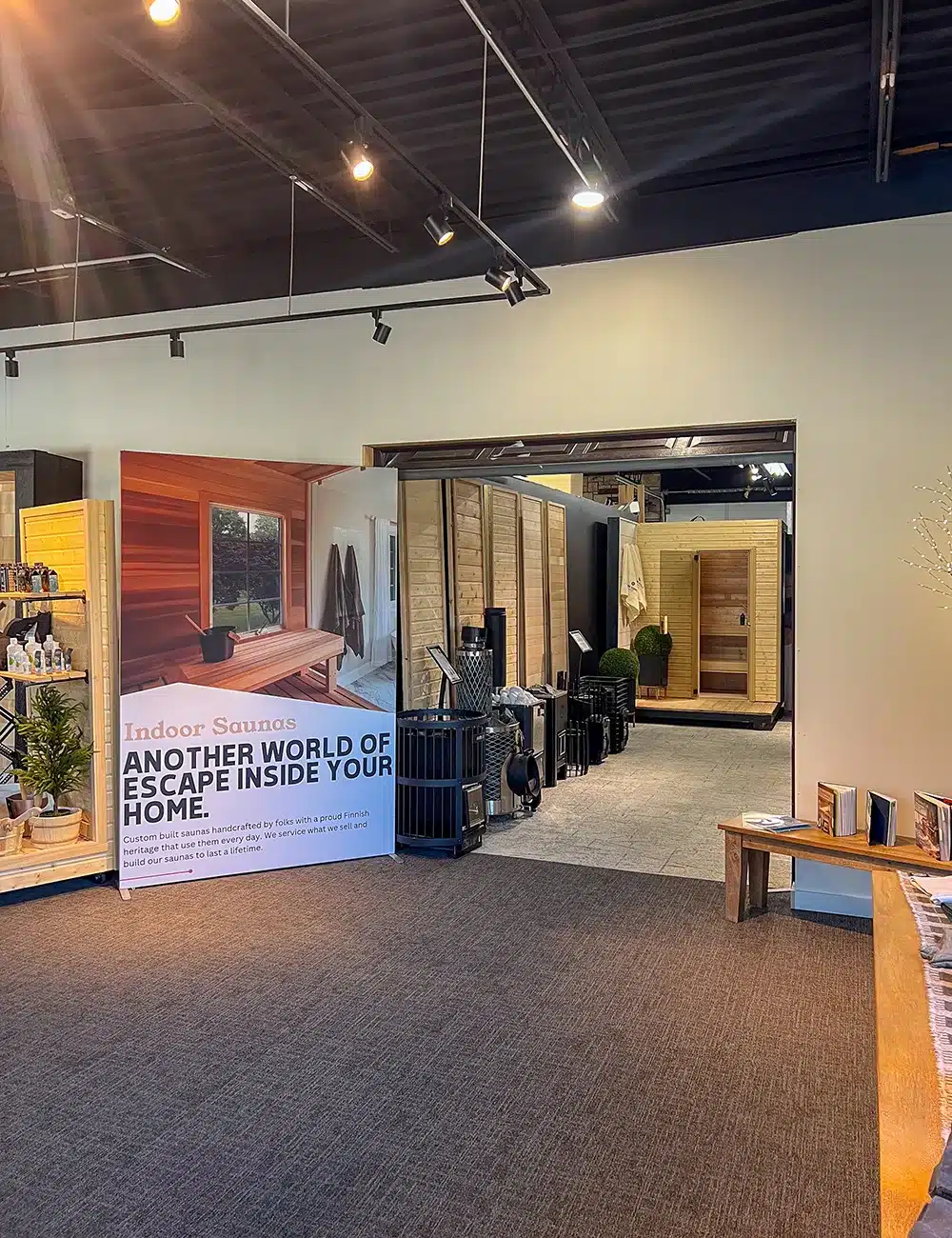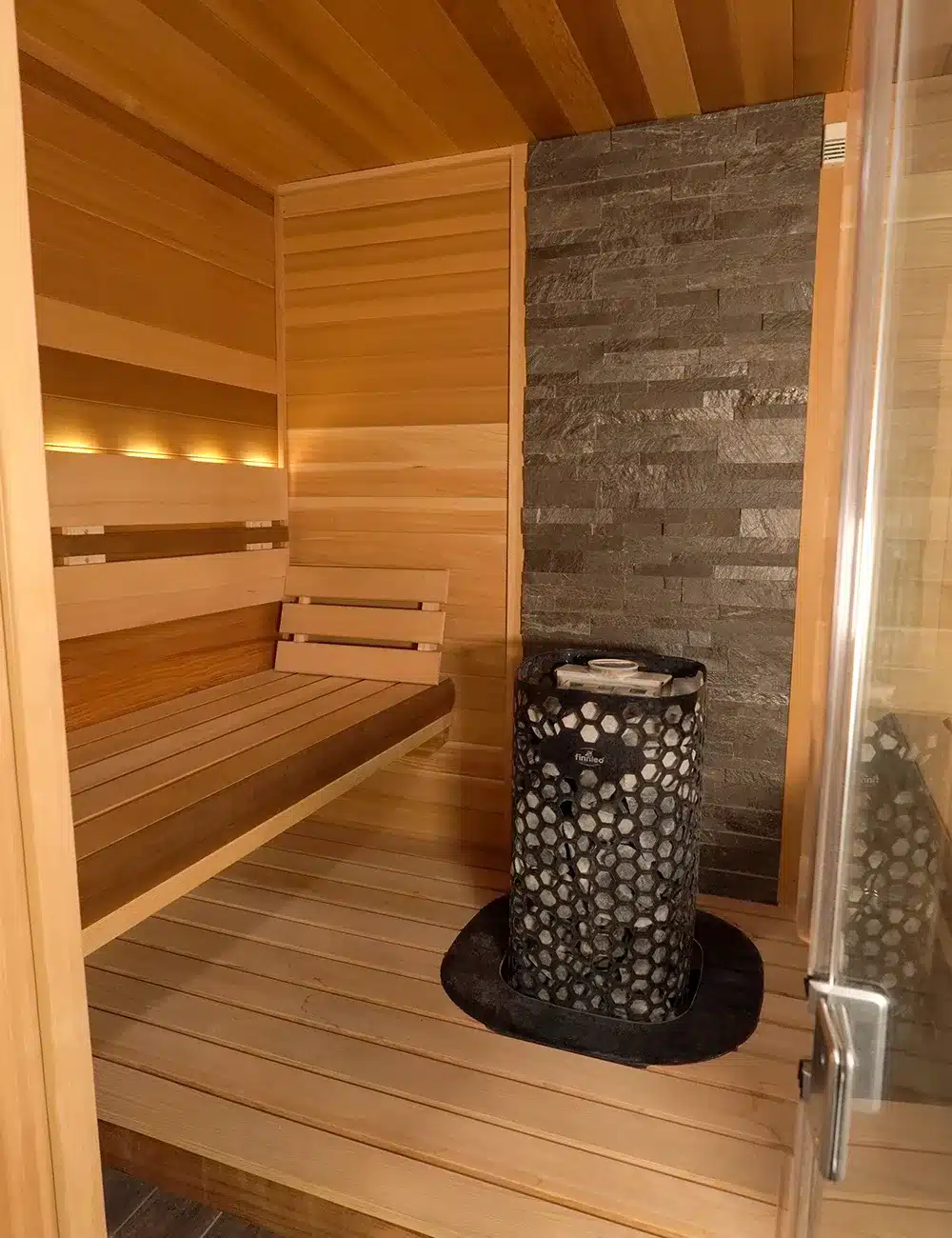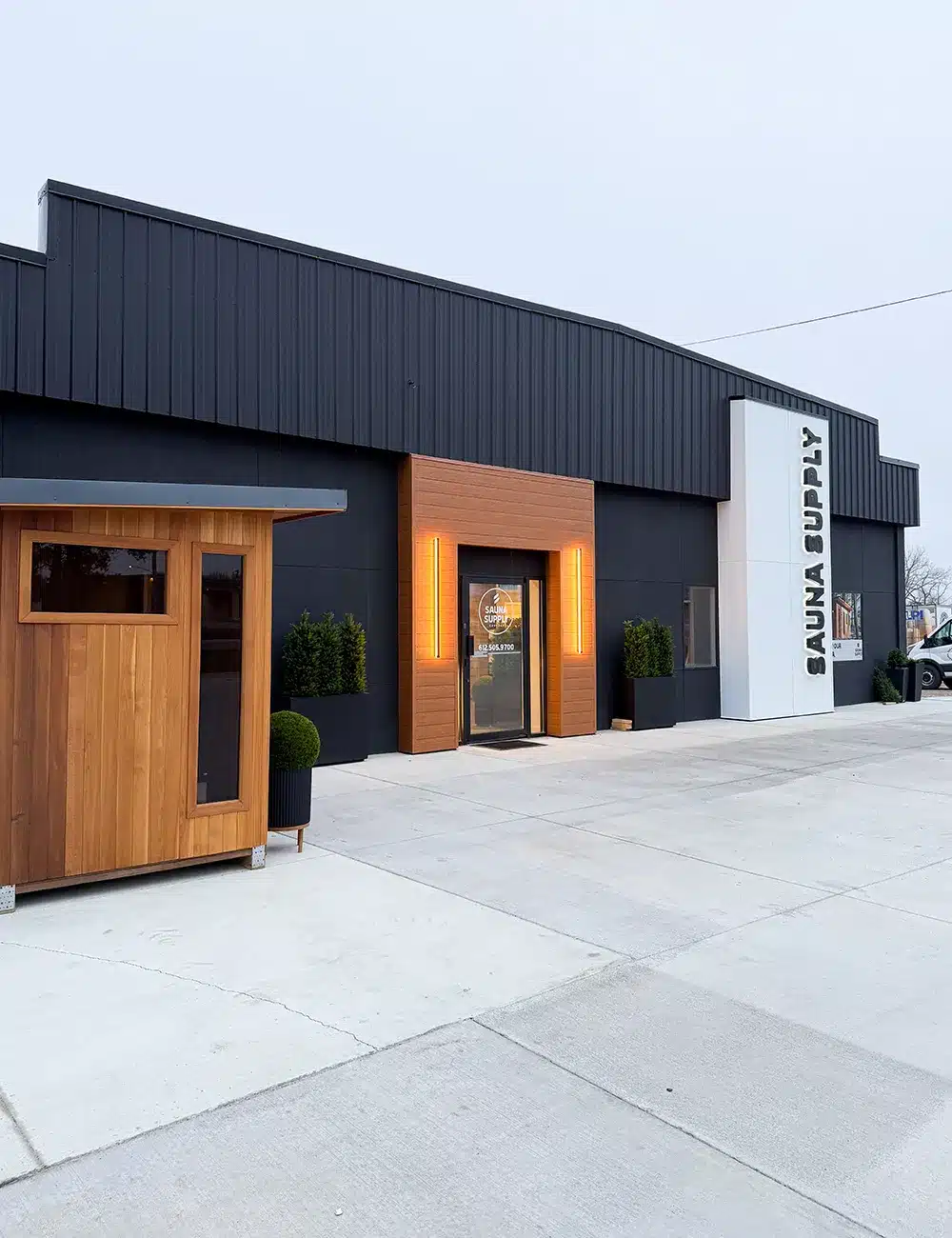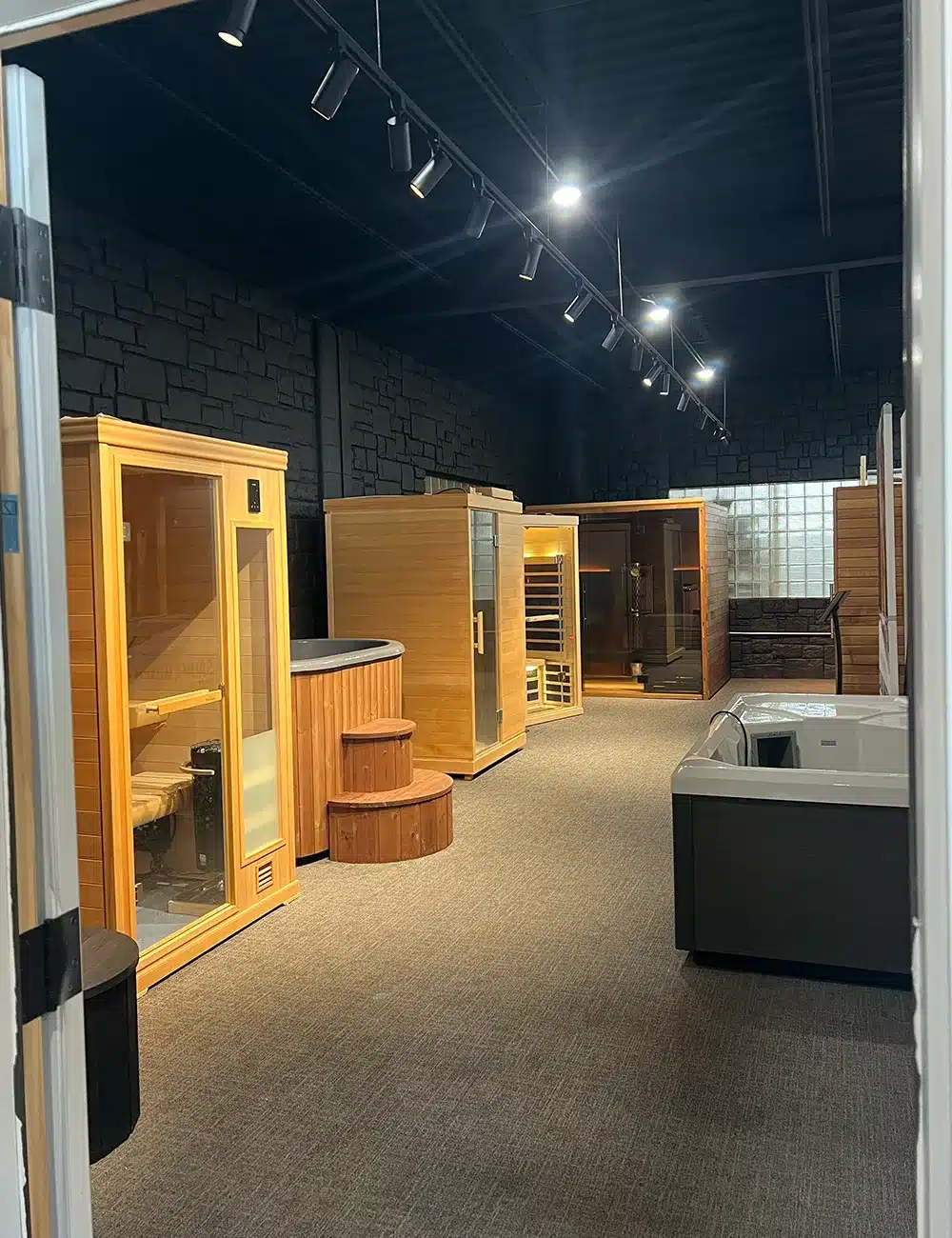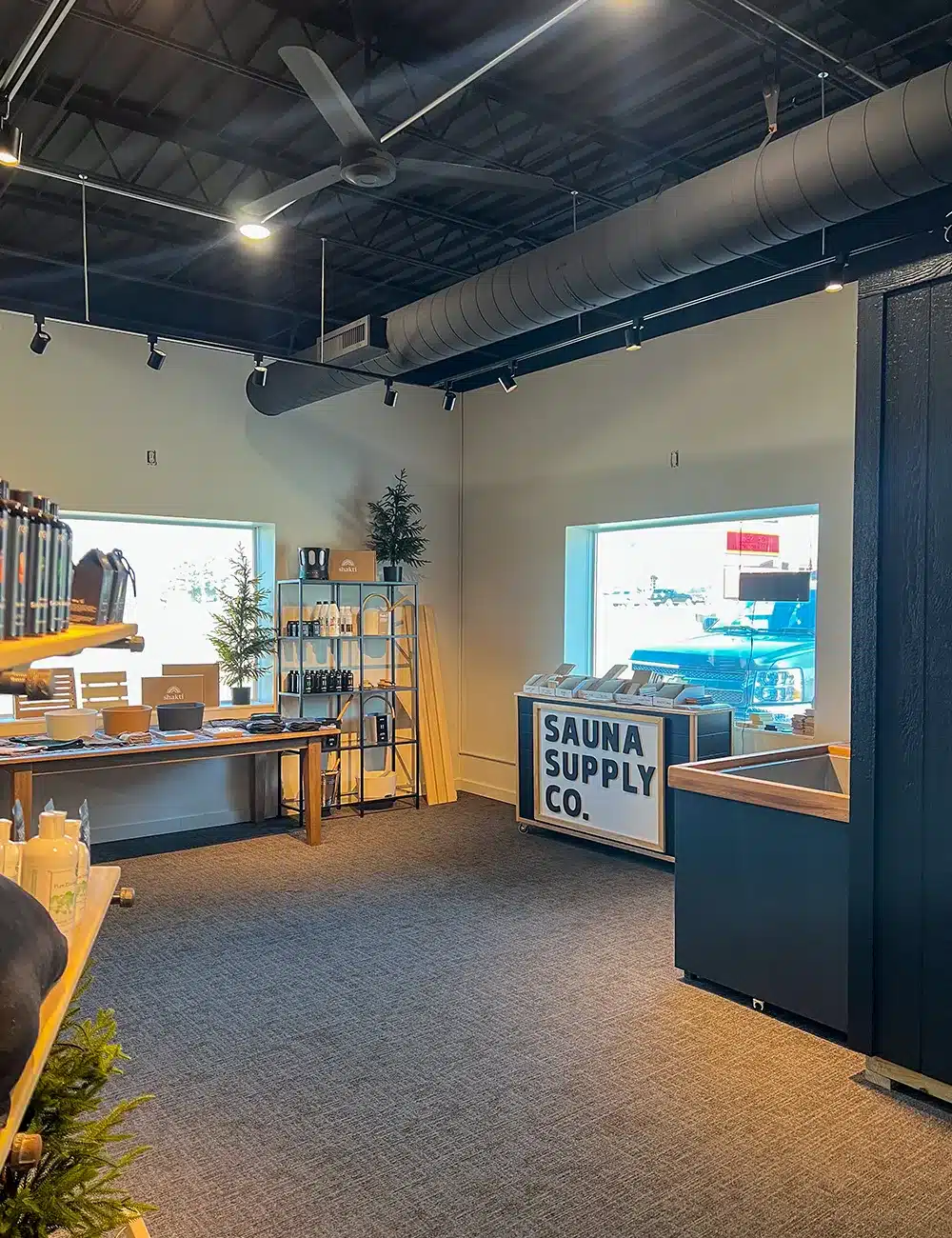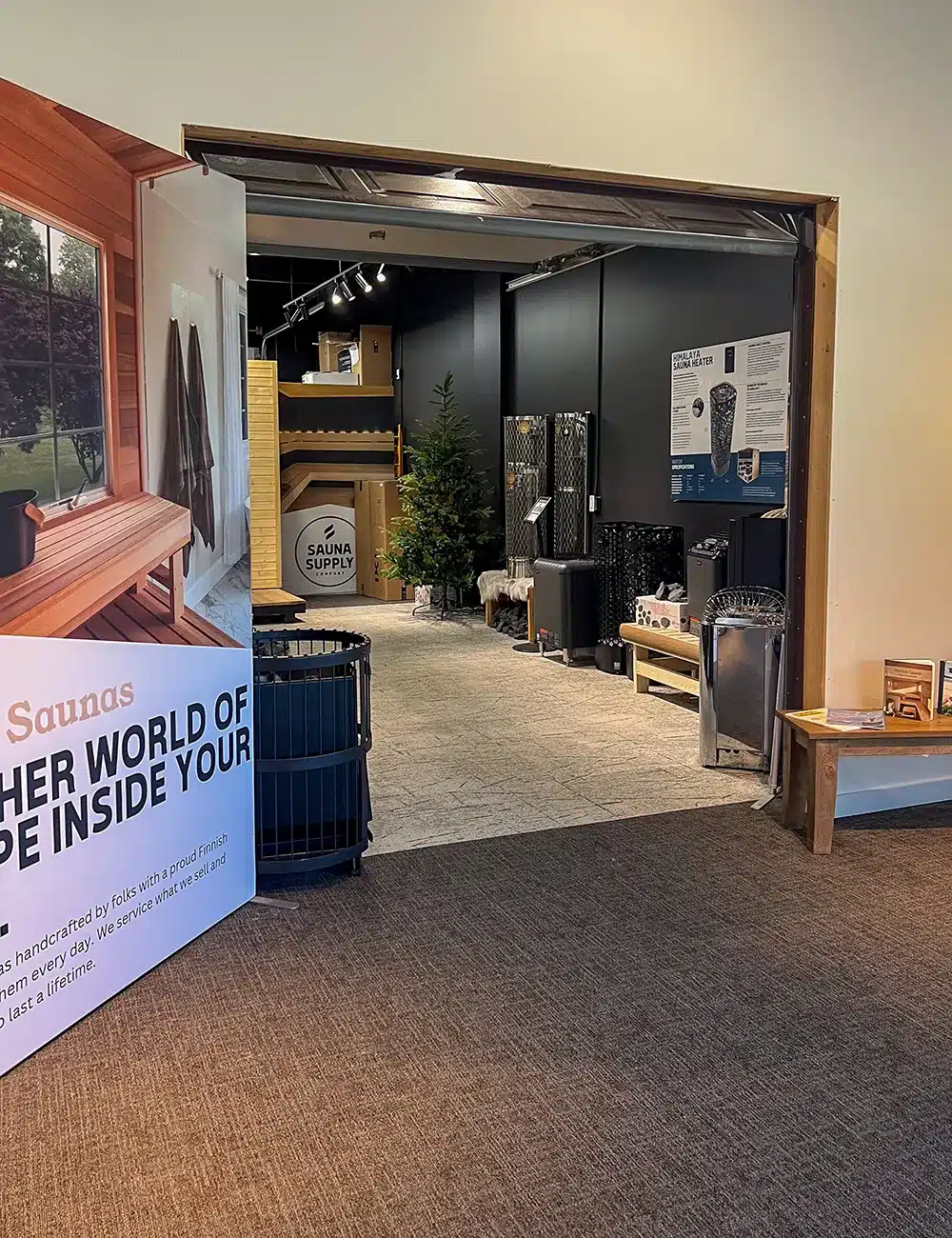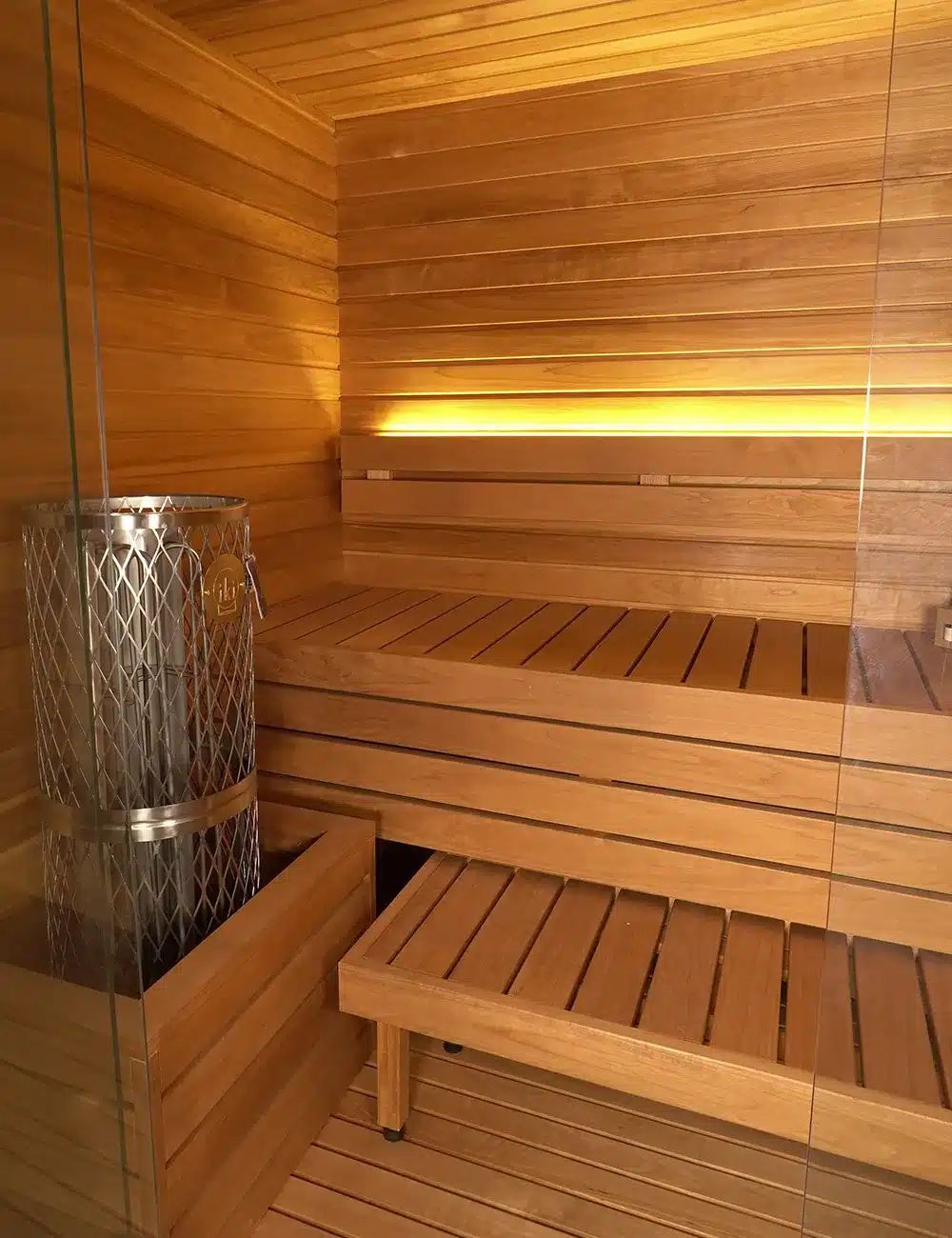Getting the heater size right is probably the most important decision you’ll make when building a sauna. Too small and you’ll be sitting there an hour later wondering why it’s still lukewarm. Too big and you’ll get these weird temperature spikes that make the experience less relaxing than it should be.
We’ve built and sold hundreds of saunas here in Minnesota, and trust me – heater sizing mistakes are painful to fix after the fact. So let’s get it right the first time.
Here’s What Actually Matters
The basic math everyone throws around is 1 kilowatt per 45 cubic feet. That’s your starting point, but it’s just that – a starting point. Your actual needs depend on a bunch of factors that most sizing charts don’t mention.
Think about it this way: your heater needs to heat the air, warm up all that wood, get those rocks hot enough for good löyly (that’s the steam when you throw water on the rocks), and fight against whatever heat is escaping through walls, windows, and vents.
A properly sized heater should get your sauna to 180°F in about 45 minutes. The rocks should be hot enough that when you toss water on them, you get that satisfying hiss and burst of steam that makes you go “ahhhh.” If your heater’s struggling to maintain temperature or the rocks barely sizzle when you add water, something’s off.
The Real-World Factors Nobody Talks About
Glass is a heat thief. Every square foot of glass – whether it’s a door or window – adds about 1 cubic foot to your calculation per square foot of glass. Got a full glass front? That 6×7 foot beauty just added 42 cubic feet to your heating requirements. We see this all the time with modern designs.
Your location matters more than you think. Here in Minnesota, an outdoor sauna in January faces way different challenges than the same sauna in Tennessee. When it’s -20°F outside, that heater’s working overtime just to maintain temperature.
Ceiling height changes everything. Seven feet is ideal. Eight feet is okay but you’ll notice the difference – literally about 15 degrees difference between head and foot level. Anything over 8 feet? You’re heating a lot of dead space up top while your feet stay cold. If you opt for an 8′ ceiling, you’ll have to build a third tier of benching to get your head in the heat.
Quick Sizing Reference
Here’s what we typically recommend (assuming 7-foot ceilings and decent insulation):
- 4×4 sauna (112 cubic feet): 3.0 kW heater
- 4×6 sauna (168 cubic feet): 4.5 kW heater
- 5×7 sauna (245 cubic feet): 6.0 kW heater
- 6×8 sauna (336 cubic feet): 8.0 kW heater
- 8×10 sauna (560 cubic feet): 10.5-12.0 kW heater
Add 10-15% if you have significant glass. Add another 10-15% for outdoor installations in cold climates. If both apply, go up a full size.
What Happens When You Get It Wrong
- Longer heat-up times (often exceeding an hour)
- Poor steam quality due to inadequately heated rocks
- Higher energy consumption
- Premature heater wear and failure
Oversized heaters create their own problems:
- Rapid temperature spikes that can be uncomfortable
- Frequent cycling that prevents rocks from reaching optimal temperature
- Poor steam quality and uneven heat distribution
- Reduced energy efficiency
Special Situations
Barrel saunas are tricky. The curved design helps with heat circulation, which is great. But they’re usually not insulated at all, so in our Minnesota winters, they need serious heating power. We often recommend wood-fired stoves for barrels if there’s room – they just perform better when it’s really cold out. Expect longer warm-up times in a barrel sauna compared to a standard outdoor sauna.
The Electrical Reality Check
Before you fall in love with that 12kW heater, check what your electrical panel can handle. Most homes can accommodate up to 8-10kW on a 240V circuit without major upgrades. Anything bigger might mean calling an electrician for panel work.
Three-phase power? That’s commercial territory. If someone’s trying to sell you a three-phase heater for your home sauna, find a different heater.
Ventilation and Air Exchange
How We Figure It Out
When customers call us, we ask about a dozen questions: Room dimensions obviously, but also – Where is it going? How much glass? What’s the insulation situation? How cold does it get where you are? How often will you use it? Are you throwing water on the rocks constantly or just occasionally?
Every sauna’s different. That calculation formula is helpful, but it’s not the whole story. We’ve been doing this long enough to know when to size up or when standard sizing will work fine.
Bottom Line
Don’t cheap out on heater size to save a few hundred bucks. The difference between a 6kW and 8kW heater might be $400, but the difference in your sauna experience – and how long that heater lasts – is huge.
If you’re not sure, err on the side of slightly larger, especially in cold climates or with outdoor installations. A properly sized heater cycles on and off. An undersized one runs constantly and dies young.
Need Help Figuring This Out?
Give us a call at (612) 505-9700 or reach us online and we’ll email you. We’ll walk through your specific situation – room size, location, how you plan to use it – and recommend the right heater. No guesswork, just straight answers based on what actually works.
Or stop by our showroom in Cokato for a free sauna session. Nothing beats experiencing different heater types and sizes firsthand. Plus, good löyly is good löyly – you’ll know it when you feel it.


